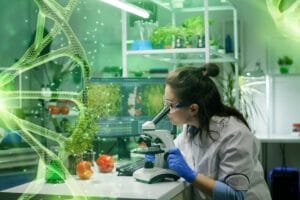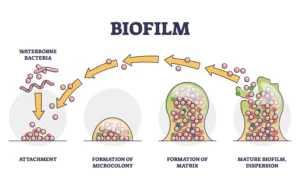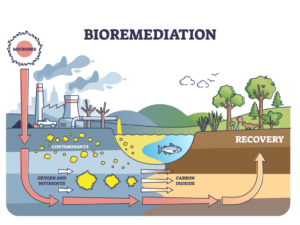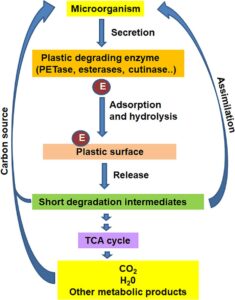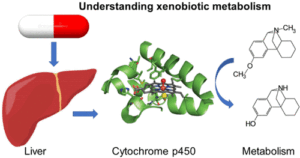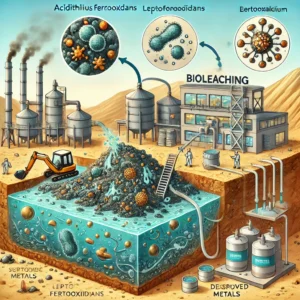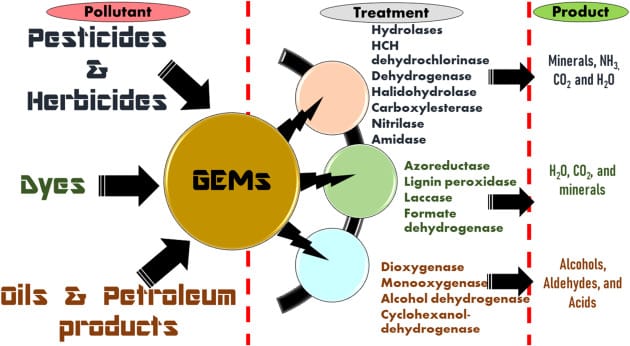Definition:
Biosorption is a cost-effective and environmentally friendly process where biological materials, either living or non-living, adsorb and sequester heavy metals from aqueous solutions. It operates through various physicochemical mechanisms, independent of metabolic activity.
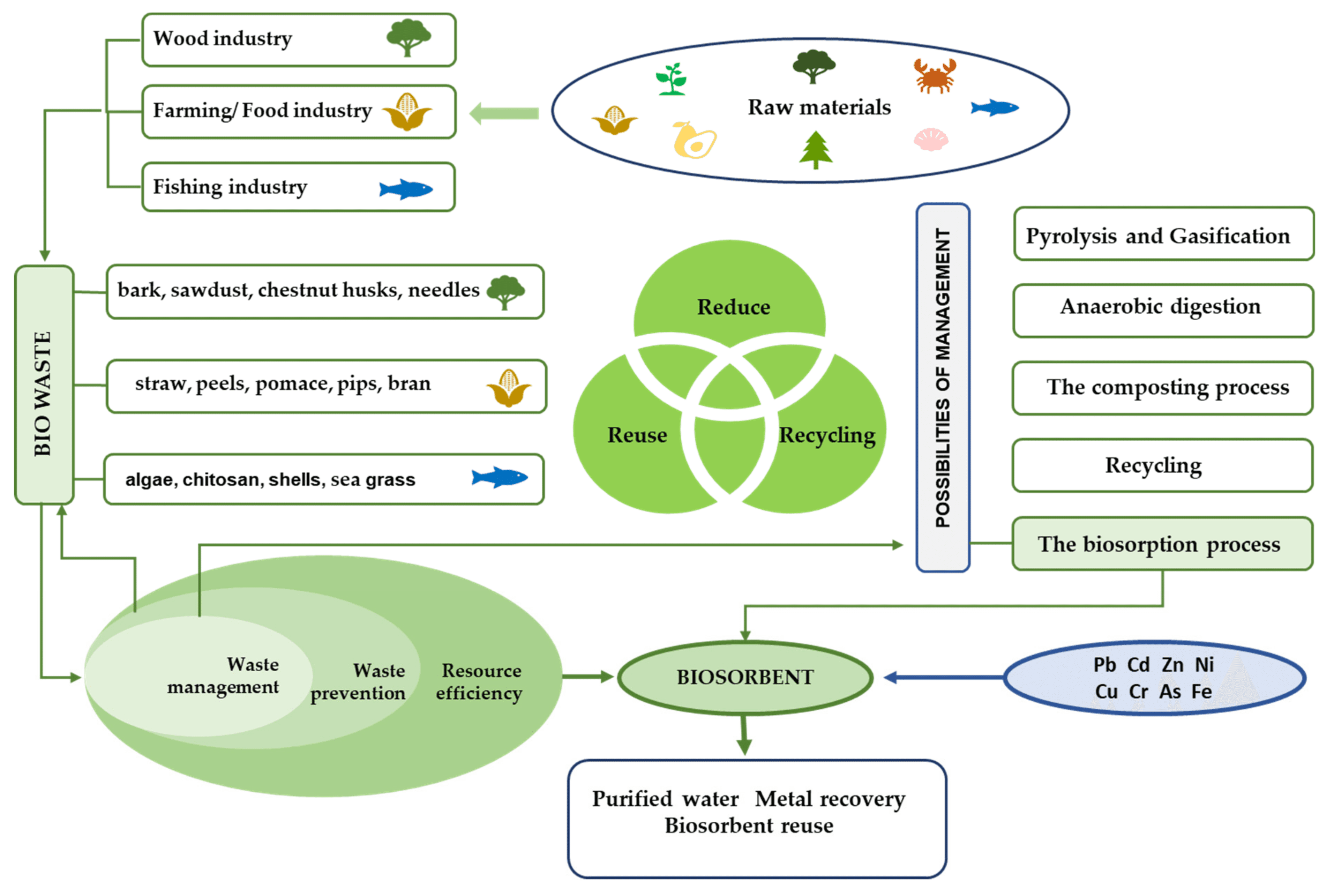
Key Features:
- Passive Metal Uptake:
- Relies on the inherent chemical properties of the biosorbent, not cellular metabolism.
- Economical Alternative:
- Uses low-cost and widely available biomass, including agricultural or industrial byproducts.
- Eco-friendly Process:
- Produces minimal secondary pollutants.
- Regenerability:
- Many biosorbents can be regenerated and reused multiple times, enhancing sustainability.
Mechanisms of Biosorption:
- Adsorption:
- Metals adhere to the surface of the biosorbent through van der Waals forces, hydrogen bonding, or electrostatic interactions.
- Ion Exchange:
- Metal ions replace ions like H⁺, Na⁺, or Ca²⁺ on active functional groups (e.g., carboxyl, hydroxyl).
- Complexation:
- Formation of coordination complexes between metals and functional groups like amines, sulfhydryls, or phosphates.
- Micro-precipitation:
- Metals form localized precipitates on or within the biosorbent matrix.
- Chelation:
- Binding of metal ions by ligands within the biomass.
Types of Biosorbents:
- Microbial Biomass:
- Algae: Brown algae with alginate and fucoidan for enhanced metal binding.
- Fungi: Aspergillus and Rhizopus species due to their cell wall components (e.g., chitin).
- Bacteria: Bacillus, Pseudomonas, and others with diverse functional groups on their cell walls.
- Agricultural Byproducts:
- Rice husk, sawdust, wheat bran, and coconut shells rich in lignin, cellulose, and hemicellulose.
- Industrial Waste Biomass:
- Brewery waste, activated sludge, or spent grain as economical sources.
- Synthetic or Modified Biomass:
- Chemically enhanced biosorbents for improved metal-binding efficiency.

Factors Influencing Biosorption:
- pH:
- Affects ionization of active sites and the chemical form of metals.
- Optimal pH varies depending on the target metal.
- Temperature:
- Influences reaction kinetics and metal binding energy.
- Initial Metal Ion Concentration:
- Higher concentrations may saturate the biosorbent’s binding sites.
- Contact Time:
- Longer contact allows equilibrium to be reached, maximizing metal uptake.
- Biosorbent Properties:
- Surface area, pore size, and functional group availability impact efficiency.
Advantages of Biosorption:
- High Selectivity:
- Some biosorbents demonstrate specificity for certain metals.
- Effectiveness at Low Concentrations:
- Removes trace metals efficiently, even at ppm levels.
- Sustainable Resource Usage:
- Repurposes waste materials into functional biosorbents.
- Reduced Energy Requirements:
- Operates under ambient conditions, unlike many chemical treatments.
Limitations:
- Limited Selectivity:
- Some biosorbents lack specificity when dealing with mixed-metal solutions.
- Desorption Efficiency:
- Certain metals may resist recovery or reuse processes.
- Pre-treatment Requirements:
- Biomass preparation (e.g., drying, grinding, or chemical activation) can increase costs.
- Scalability Issues:
- Translating lab-scale processes to industrial applications presents logistical and engineering challenges.
Applications:
- Industrial Wastewater Treatment:
- Removal of toxic heavy metals like Pb, Cd, Cr, Ni, and Hg.
- Environmental Remediation:
- Cleaning up heavy metal contamination in soil and water bodies.
- Resource Recovery:
- Extracting valuable metals like gold, silver, and rare earth elements from waste streams.
- Pre-treatment for Advanced Systems:
- Used as a preliminary step before chemical or physical treatments.
Future Prospects and Innovations:
- Genetically Engineered Microorganisms:
- Developing bioengineered species with enhanced uptake capacities and specificity.
- Nano-biosorbents:
- Incorporating nanomaterials to boost metal-binding efficiency and kinetics.
- Hybrid Treatment Technologies:
- Combining biosorption with membrane filtration, ion exchange, or advanced oxidation processes.
- Circular Economy Models:
- Recovering and reusing metals and regenerating biosorbents to minimize waste.
- Adaptation to Emerging Contaminants:
- Expanding applications to address complex and emerging pollutants.
By leveraging natural materials and processes, biosorption offers a promising pathway for sustainable heavy metal remediation and resource recovery.

